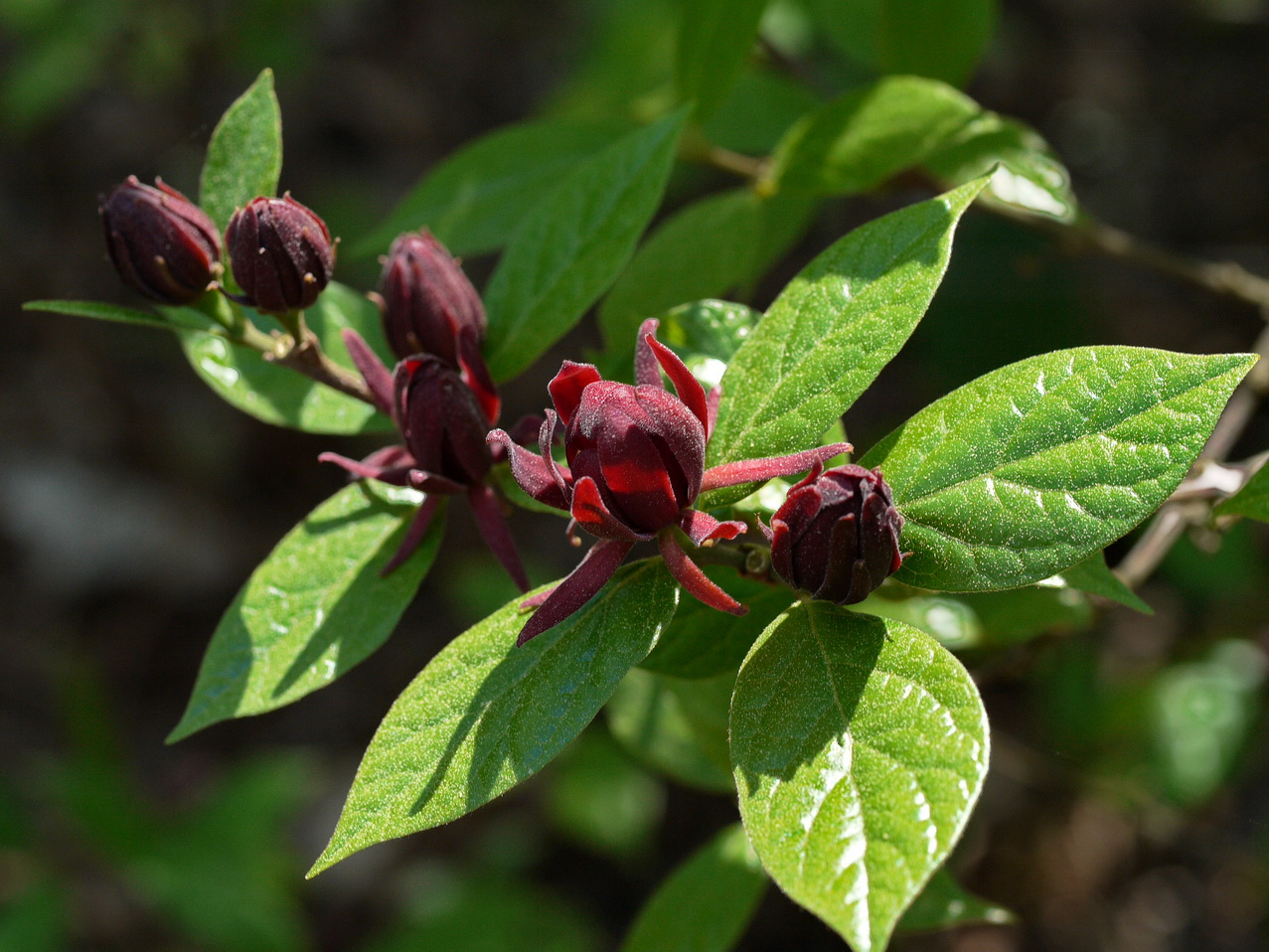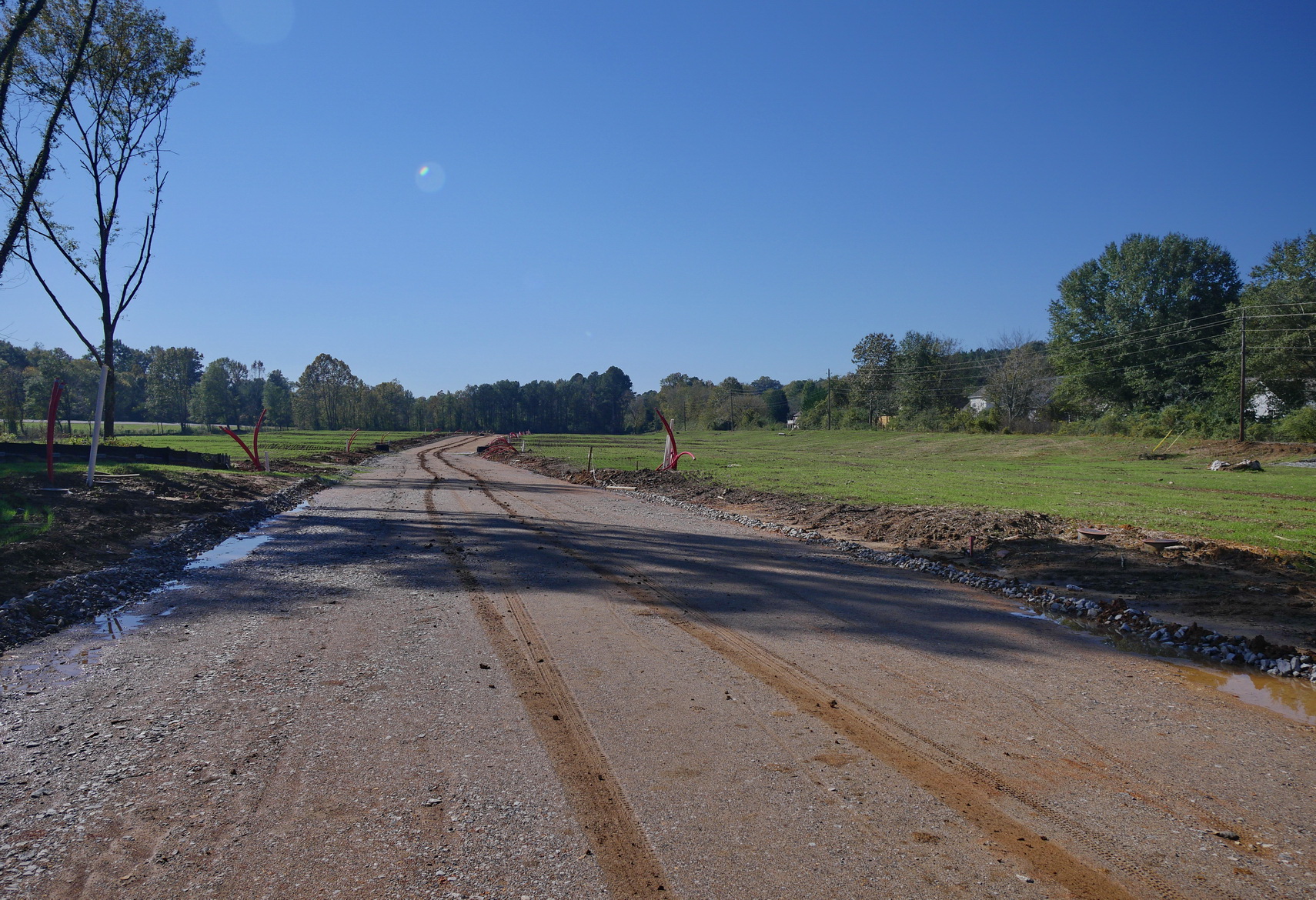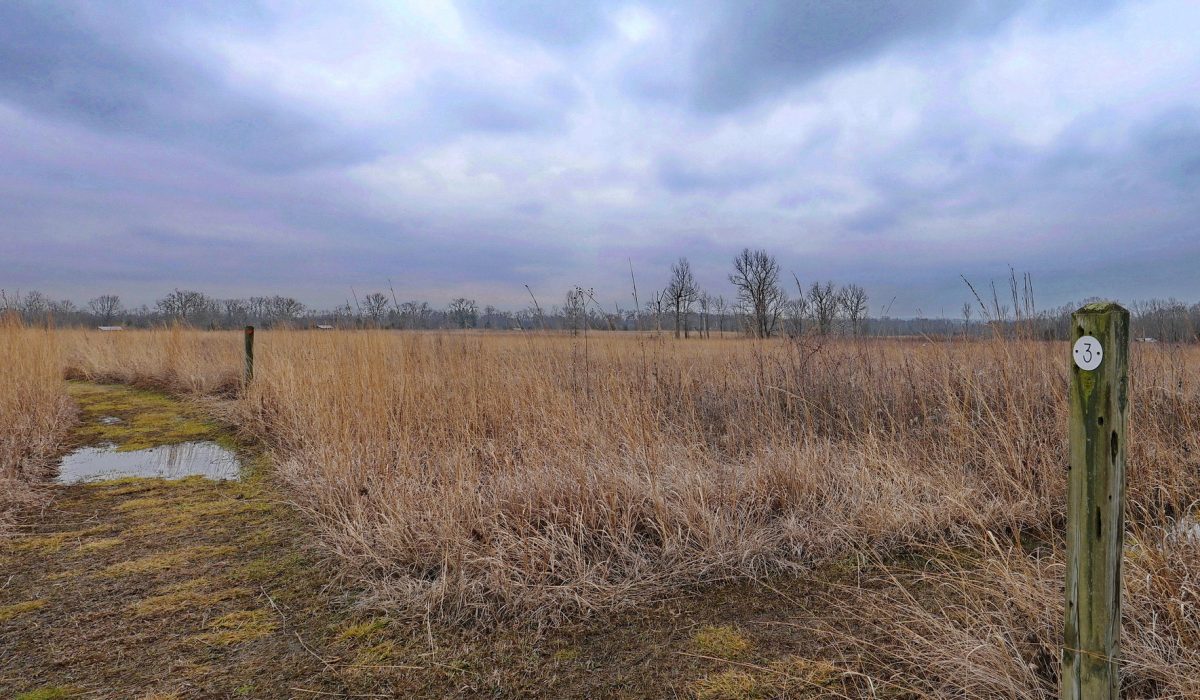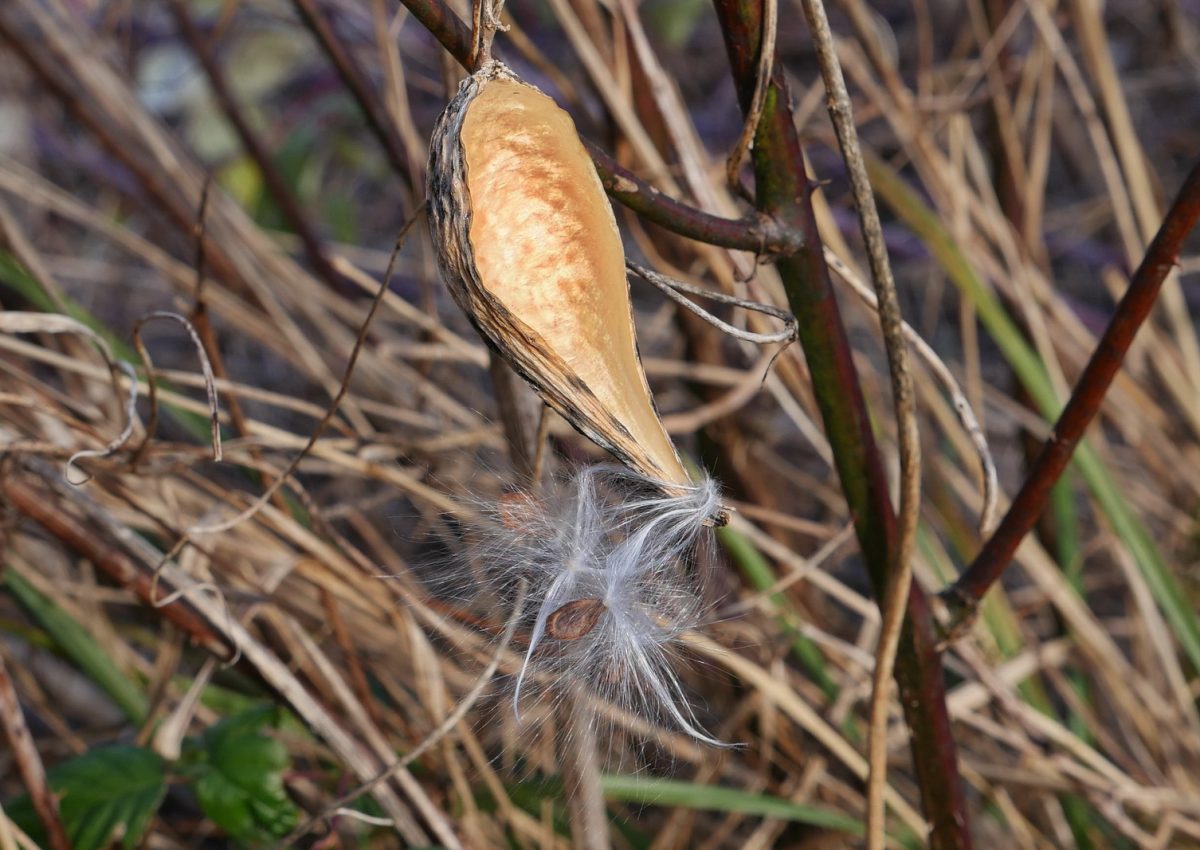Remembering the Native Landscape

Written in gratitude to Sara Stein, Stephen Jenkinson and Suzanne Simard, all pioneers of thought for our time, all practitioners of the things they believe in.*
Early last summer, I spotted my neighbor Caroline as I was walking out to weed the front gardens. It was a beautiful day and we rarely see one another, so I walked across the street to speak with her. Our greeting began awkwardly, but soon we were at ease and engaged in neighborly conversation. The ease came spontaneously when she looked across the street at my place and expressed fondness for my natural landscape. I thanked her for the compliment, but sheepishly admitted that the gardens’ beauty was often overshadowed by a wildness that is unattractive, unwelcoming to some. Just then, Caroline directed her eyes toward a group of shrubs I had planted a few years earlier. She paused and said, “Oh my goodness, are those sweetshrubs?” Few people are familiar with our native sweetshrub, so I was delighted that she recognized them and invited her to walk closer to see the plants. As we drew near, her smile widened, her face beamed and she began voicing childhood memories, fond recollections of exploring her grandparents’ property on Lookout Mountain, with the lovely fragrance of flowering sweetshrub in the air. Today, recalling her words, I can once again see her radiant face, I can once again feel her affinity to those childhood days on the mountain — these were meaningful moments that connected her to native plants and to the natural world.
“Today’s children, growing up on lawns and pavements, will not even have nostalgia to guide them, and soon the animals will be not only missing but forgotten.”- Sara Stein, Noah’s Garden
I first read this observation of Sara Stein’s more than 25 years ago, when I was a horticulture student at the University of Tennessee, Knoxville. Sara had come to the university’s agriculture school to speak about her recently published book, Noah’s Garden. I was enthralled by her talk, and went to buy her book at the campus bookstore several days later. Noah’s Garden tells the story of a gardener’s endeavor to convert a conventional lawn-dominated landscape to a natural, ecology-based landscape, by using native plants. I’ve re-read the book more than a few times, and each time this single sentence rises from the page and seizes me, still holding fast after all these years. I use it frequently in gardening talks and here I am, beholding it again. I think that’s because it’s more than an allegation. Indeed, it’s a revelation that opens us to a loss, a privation that has come upon us so slowly, so imperceptibly over time that few noticed. The reality is that many of our children are growing up with few, if any, meaningful encounters with the natural world. Our children are becoming adults without any real-life experience of living amid the indigenous plants of our homeland, and without ever sinking their hands into our native soil. At first, Sara Stein’s assertion startled me, then it awakened me; the connection between our rapidly-changing human culture and our fast-fading memory of the native landscape is ominous.

In the early 1960s my young, aspiring parents built a new split-level home along the broken, irregular edge of country and suburbs on the south end of Dayton, Ohio. On the suburban side were mostly modest, middle-class homes; all were planted with a bluegrass lawn, and all were planted with a hedge of neatly trimmed evergreens around the foundation. A mixture of mature trees that survived construction, and young, newly-planted trees dotted the remaining landscape. On the country side were thin, fragmented strips of woodland mixed with abandoned parcels of farmland that through neglect had become open fields of tall grasses and wildflowers. Undoubtedly, it was a disturbed area and our newly-built home contributed to the disturbance. The country side, for all that, had endured just large enough and intact enough to be a viable home for local wildlife. I can still recall the towering grasses and the shoulder-high milkweed pods in fall. It’s hard to believe today, but there were pheasants nesting in the abandoned field behind our house; I can remember the hunters coming to shoot them. Mom yelled at them one fall day after a pheasant, shot by one of the hunters, fluttered across our backyard and landed on the back stoop, a small concrete perch just outside the kitchen dining area. As it happened, though, the careless hunters were not the pheasants’ biggest problem, not even close. Their biggest problem was land development; it was the likes of us and the anxious, driven developers that would soon bring an end to the open fields — and to the hunters’ forays. In the years that followed, we all watched, oblivious, as the suburbs crept, then lunged, repeatedly, to swallow the remnants of surrounding country. We watched as the open field behind our house, the narrow creek on its northern boundary, and all of the natural life in its disrupted but living web, succumbed to bulldozers to make way for new roads, leading to new homes, all with two-car garages. Then came more lawns and more hedge plants, mostly yews and junipers, to cover the stricken soil. Gone were the milkweed, the goldenrod, the asters. In came more bluegrass, more petunias, more marigolds. I can recall the loss, and perhaps, I felt something, distantly, but I didn’t comprehend it, nor did my parents. No one did. Collectively, we were swarmed by progress, a ravaging that we had come to believe in through the messaging of the nightly news and the glitzy advertisements that pay for that news. In those early years, I don’t remember anyone questioning the costs of progress. Except for a few brief economic slows in that quest for prosperity, the growth continued unrelentingly for the next three decades — more than enough time for the next generation to appear and pass through childhood. Sadly, what emerged from that passage were scores of young adults who had no awareness of fields and creeks, no acquaintance with pheasants and frogs, no familiarity with towering grasses and milkweed pods. This new generation garnered no memories of the natural life that had once ennobled the now subdivided, lawn-carpeted land. They came of age without nostalgia for our beautifully fragrant sweetshrub, nor any other native plant to guide them.

Though my love of nature certainly took root in those childhood days, my actual working-life interest in native landscaping would not be roused for several more decades. It happened in the early winter of 1984, while browsing for gardening books at the Downtown Branch of the Dayton, Ohio, Public Library. By that time, as a young adult, I had moved from the suburbs to the city where my wondering and wandering at our community’s flagship library brought me to a book called Landscape Artist in America. As I had fanciful dreams of one day being a landscape artist myself (of the gardening variety), I was captivated by the title. I slid the book from the shelf, stooped in the aisle, and began to read. More than the story of an artist, this was a story of native plants and the prairie landscape, as told through the work of one of America’s most famous landscape architects, Jens Jensen. I fell in love with the book, and borrowed it from the library time and time again during the winter months that followed. During the warming days of that next spring, buoyed by Jensen’s work, I went solo and started my first professional landscape service. I had come to revere Jensen’s work and cherished hazy visions of building gardens with broad swaths of native plants, just as he’d done. When I actually got to work, however, there were few native plants, and no native gardens, to be found. I was a novice without a mentor. No one I met during my early working years was talking about native plants. As a first-year business owner, I was certainly ambitious, but mostly, I was just trying to survive. To support what gardening work I could find, I mowed lawns to pay the bills; my interest in native plants waned. It would be more than a decade before I met Sara Stein in Knoxville, and yet another before I would honestly begin practicing native gardening. Through it all, though, a hidden attraction to native plants persisted. Native plant memories were seeded in me; they were alive, below the surface, covered, dormant. In hindsight, I can see that my love of Sara Stein’s writing germinated from that seed bed of slumbering memories, the nostalgic recollections of my early years, the years before the bulldozers buried the creek and the open field. Surely, those same memories are the ground from which my captivation with Jensen’s work emerged. Those early remembrances of our native land were entombed by a thick, confining layer of more recent memories. I was now surrounded by a severely altered land, built on the ruins of the native landscape. It had become my new home; only dismembered leavings of our native landscape remained.
I have pulled and otherwise killed many thousands of weeds in my gardening days, and I have removed more than a few acres’ worth of invasive plants. Still, I never fully recognized the underlying beliefs that forged my relationship with those plants until I began gardening here in Chattanooga Valley. Like most everyone else, I have always assumed that weeds were an inherent part of every landscape, that they would always be here, and that I would always be pulling them. While these assumptions may be true, I dearly regret never straying to think beyond them. It’s regrettable because underlying all the weeding and all the invasive plant removal was a foundational belief that any plant emerging from nature, any plant not intentionally planted with human hands, was in fact a weed. This matters immensely, because almost the entirety of plants sold by nurseries and garden centers in those days were, indeed still are, non-native, exotic plants; I, like many others, came to believe that all native plants were weeds, wild and unacceptable for the modern home landscape. Sorrowfully, I must now acknowledge that as the native plants were buried by bulldozers, so was my recognition of them. The refaced layers of the soil and of my mind were now glutted with memories of exotic nursery plants. Moreover, many of those exotic plants were on the loose, further scattering their seeds, and as the seeds spread, so spread their memory to the countryside beyond.
“DNA, you could say, is one way the First Ancestor sings to his or her grandchildren, granting them their days, and those songs are the lives the generations of grandchildren get to live. And the grandchildren’s memories of their ancestors are those songs being sung. That is a powerful thought to think: you have memories of things you’ve no experience of. Those memories aren’t yours. Those memories are your ancestors, murmuring their songs of life, songs that you get to overhear.” Stephen Jenkinson, Come of Age.
At times, my attempts to establish native plants here in Chattanooga Valley have nearly exhausted me. I’ve pulled privet by the truckload in the winter months, only to watch new privet seedlings burst forth the following spring. I pulled them again; even more privet seedlings came. Their memory was rooted in the land. It was disheartening, especially early on. After a few years time, though, just as my childhood memories of the native landscape were kindled to life by the works of Jens Jensen and Sara Stein, I was encouraged to see flickers of native plants emerging among the occupying invasives. In a clearing where I had removed privet and mimosa, a small colony of our native mist flower appeared — just one, but enough to ignite hope. Under the lofty loblolly pines, where I had removed extensive colonies of honeysuckle and large clumps of tall fescue, sprang seedlings of black-eyed Susan, Carolina wild petunia and lyre-leaf sage. There they were — there they had been — deep within this land’s memory, stored in the seeds that had lain dormant for years, decades, even, were remnants of native plants that once grew here. Slowly, ever so slowly, as I removed the invasive plants, that memory was unearthed, still viable — all along, longing for life. I wonder, now, how many layers deep those living memories are buried? How many generations back do they go? What might it take to bring them into the present? I wonder, too, about my own memory of this native land. How far back does it go? Does it reach beyond my childhood memories? And how about those children who come of age with no lived memory of our native plants to guide them? Can they remember what they have not experienced? Can our ancestors impart their memories of this native land to us? Plants, perhaps, can provide a clue.
“Mother Trees …. pass their wisdom to their kin, generation after generation, sharing the knowledge of what helps and what harms, who is friend or foe, and how to adapt and survive in an ever-changing landscape.” Suzanne Simard, Finding the Mother Tree.

Plants pass their memory from one generation to the next through seeds. It’s in their DNA. Each seed’s memory comes directly from its immediate parent plants, but the lineage of that memory goes back to the beginning, all the way back to the very first seed, and to the first plant that bore that seed. The memory of the first plant endures; it informs the growth of every plant that follows. True, plants evolve over time, but early memories continue to define each plant’s relationship with the rest of nature. How about us then? Did we not also emerge from this earth? Do the reproductive cells that become us carry ancestral memories of this native land? Somewhere below the surface, buried alive in generations past, might there be visions of open fields and woodland, of wild creeks, wild rivers and wildflowers? Carried in our DNA, vanished from the surface and lost to our present, but not gone, these dormant visions may be longing for life. If we can unearth them by sinking our hands into our native soil and by surrounding ourselves with the lives of native plants, maybe we will begin to see that we are partners after all, living in the earth, not on it. Maybe we will discover that this native land, this forest of oak, and hickory, and dogwood, is indeed our homeland. It’s akin, perhaps, to what Suzanne Simard discovered through decades of tree research in the American Northwest. Her discovery was expressed simply, directly, beautifully in the title of her recent book. It’s called Finding the Mother Tree. That’s where decades of research led her — to the mother tree.
“Along the way, it became uncanny, almost eerie, the way my work unfolded in lockstep with my personal life, entwined as intimately as the parts of the ecosystem I was studying.” Suzanne Simard, Finding the Mother Tree.
Yes, we too have an ancestral tree whose memories connect us to the ways of our ancestors and the ways of Nature. They may be gone from view, but they’re there. Lamentably, but not fatally, they are covered by the sediment of more recent memories, memories fixed by habit and the dogged advertising campaigns of industry, which suggest that we are rightfully here to dominate the earth, as we will, oblivious to the costs, without question.
“Nostalgia,” as Stephen Jenkinson once said, “is the halfway house on the road to oblivion.” It’s one slippery step away from the complete loss of the memories that can sustain our kindred relationship with the earth. Nostalgia, even when tainted by illusion, has the power to bring the past, at least temporarily, into the present, and when it comes forward, it often tells us a different story than the one that inhabits our today. Nostalgia can speak to us of wildflowers, wildlife and wild streams. Its presence suggests that a knowledge of the ways of the earth — and our proper place in it — are stored in our DNA. Nostalgia may whisper ancestral stories to us, stories of our relationship to this land and to native plants. Now, more than ever, we need to root out those old stories, draw them into the present and share their teachings. Surely, we also have new stories to tell, stories of the native mother gardens we have nurtured into being, and stories of the daughter gardens that will spring from them. Many of these gardens grew out of impoverished modern landscapes, similar to those that ultimately surrounded my youth. They are now growing through and over the lawns and pavements that buried our earliest memories of this native land. They are now nurseries providing plants to fellow native gardeners. These gardens, and the stories that follow them, will grant new memories to guide the generations that follow us. They will teach of a time when we relented, finally, and ceased the ruthless imposition of our will on the land, benignly calling the work development. They will teach of a time when we belatedly, but decisively resolved our relationship with weeds, coming to acknowledged that many plants emerging from nature were not weeds at all, but rather, beneficial native plants longing for life, longing to heal the earth. They will teach of a time when we engaged in a new relationship with nature, a time when we controlled less and allowed more, a time when we began to Let Nature Happen.
I am very grateful for Emily Campbell who worked this on post, line by line, word by word, through multiple drafts to get it into its final fluid form.
Your editing skills are superb! Thank you, Emily!
*For more information on the work of Sara Stein, Stephen Jenkinson and Suzanne Simard, please see the “Sources” page of the blog.